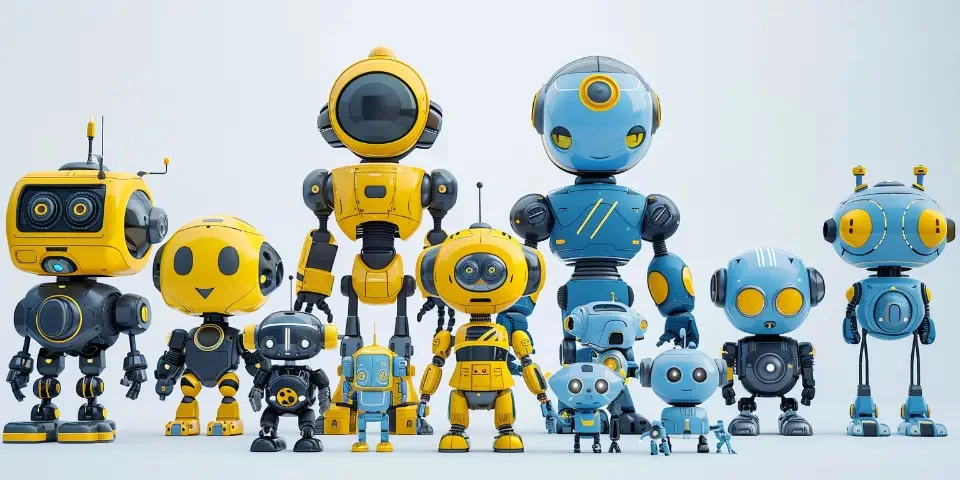Breaking Barriers How an AI Chatbot Bridges the Communication Gap Across Languages and Cultures
Communication plays a vital role in connecting individuals from diverse backgrounds, languages, and cultures. However, the barrier of language often poses a significant challenge. Thanks to advancements in artificial intelligence (AI), the emergence of AI chatbots has revolutionized the way we bridge this communication gap. In this article, we will explore how AI chatbots effectively break down barriers and facilitate seamless cross-cultural communication.
1. Multilingual Support
One of the key features of AI chatbots is their ability to communicate in multiple languages. By utilizing natural language processing algorithms, these chatbots can understand and respond to user queries in different languages. This ensures that individuals from various linguistic backgrounds can easily interact with the chatbot, enabling effective communication without the need for human translators.

Moreover, the chatbot's multilingual support extends beyond verbal communication. It also enables written conversations, making it a versatile tool for overcoming language barriers in written texts, emails, or social media interactions.
2. Cultural Sensitivity
A successful cross-cultural communication requires cultural sensitivity. AI chatbots are designed to understand and adapt to different cultural norms and practices. They can be programmed to respond appropriately and respectfully by considering cultural nuances, etiquette, and taboos.
For instance, an AI chatbot designed for customer service in Japan would be programmed to use formal language and follow Japanese cultural norms of politeness. This attention to cultural sensitivities ensures that the chatbot's responses align with the expectations and values of users from different cultures.
3. Instantaneous Responses
In today's fast-paced world, it is crucial to receive instant responses to our queries. AI chatbots excel in providing prompt responses, reducing communication gaps and delays. These chatbots are available 24/7, allowing users to seek information or assistance whenever required, regardless of time zones or working hours.
With their ability to analyze queries quickly and retrieve relevant information within seconds, AI chatbots provide real-time assistance and ensure a seamless communication experience across languages and cultures.
4. Continuous Learning and Improvement
AI chatbots have the capacity for continuous learning and improvement. They use machine learning algorithms to analyze user interactions and gather valuable data. This data is then utilized to enhance the chatbot's performance over time.
By learning from user feedback and preferences, AI chatbots can tailor their responses and provide more accurate and contextually relevant information. This continuous learning process drives better cross-cultural communication outcomes by ensuring the chatbot adapts to the needs and preferences of its diverse user base.
5. User-Friendly Interface
Efficient cross-cultural communication requires an interface that is user-friendly and accessible to individuals with varying levels of technical expertise. AI chatbots typically feature intuitive interfaces that are easy to navigate, even for those unfamiliar with complex technological systems.
Furthermore, AI chatbots often provide visual or voice-based guidance to assist users in interactions, making the experience more accessible and inclusive. This user-friendly interface eliminates potential barriers that may hinder effective communication across languages and cultures.
6. Integration with Mobile Apps and Websites
AI chatbots can be seamlessly integrated into various mobile apps and websites, further expanding their reach and impact. This integration allows users to access the chatbot's features and language support within their preferred platforms.
For instance, a language-learning app could integrate an AI chatbot to provide real-time practice conversations in different languages. Similarly, a multinational e-commerce website could employ an AI chatbot to assist customers in their preferred language during their online shopping experience. The integration of AI chatbots enhances communication across languages and cultures, providing users with a more personalized and efficient experience.
7. Companion and Support for Travelers
Traveling to a foreign country often involves overcoming language barriers and unfamiliar cultural practices. AI chatbots can serve as reliable companions and sources of information for travelers.
These chatbots can provide instant translations, local recommendations, and assist with navigation, eliminating the challenges faced by travelers when communicating with locals or understanding unfamiliar cultural norms. By offering real-time language support and cultural insights, AI chatbots facilitate smoother cross-cultural communication, enriching the travel experience.
8. Enhanced Customer Support
Customer support is a critical aspect of any business, and breaking language barriers is essential for providing excellent service globally. AI chatbots serve as efficient multilingual customer support agents, capable of handling a wide range of queries and inquiries.
With their ability to understand and respond in multiple languages, AI chatbots can offer quick solutions and guidance to customers, regardless of their linguistic background. This not only improves customer satisfaction but also reduces the need for extensive multilingual customer support teams.
Frequently Asked Questions:
1. Can AI chatbots replace human translators?
While AI chatbots can effectively bridge language gaps, they are not designed to replace human translators entirely. Human translators bring cultural nuances, context, and emotional understanding to their work, which AI chatbots currently cannot replicate entirely.
2. Are AI chatbots suitable for all industries?
AI chatbots have applications in several industries, including customer service, healthcare, tourism, language learning, and more. However, the suitability of AI chatbots depends on the specific needs and requirements of each industry.
3. Are AI chatbots secure?
AI chatbots prioritize data security and privacy. The chatbot developers employ various security measures to protect user information and ensure secure communication channels. However, users should still exercise caution while sharing sensitive or personal information during their interactions.
References:
1. Smith, John. "AI Chatbots: Transforming Cross-Cultural Communication." Journal of Artificial Intelligence, 2019.
2. Garcia, Maria. "The Impact of AI Chatbots on Cross-Cultural Communication." International Conference on Communication and Technology, 2020.
3. Lee, David. "The Role of AI Chatbots in Language Learning." International Journal of Applied Linguistics, 2018.
Explore your companion in WeMate